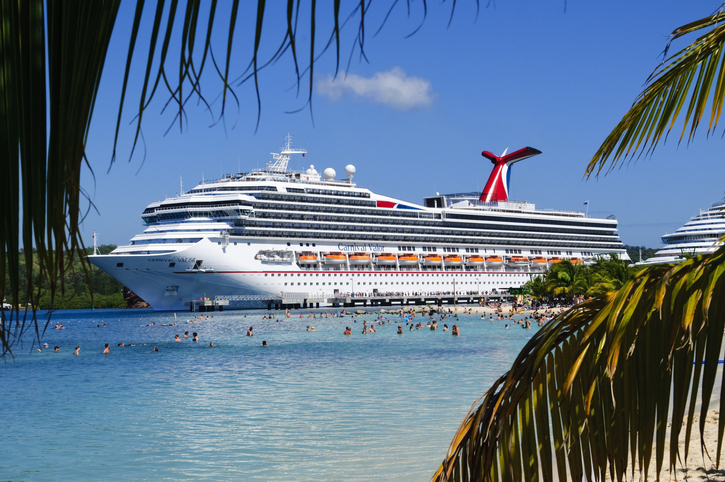ii view: Carnival looks to ramp up operations
Shares in this cruise operator are down more than 60% in a year, but is there hope on the horizon?
12th January 2021 11:22
by Keith Bowman from interactive investor
Shares in this cruise operator are down more than 60% in a year, but is there hope on the horizon?

Fourth-quarter trading update to 30 November 2020
- Adjusted net loss of $1.9 billion (£1.4 billion)
- Liquidity of $9.5 billion (£7 billion)
Chief executive Arnold Donald said:
"2020 has proven to be a true testament to the resilience of our company. We took aggressive actions to implement and optimise a complete pause in our guest cruise operations across all brands globally, and developed protocols to begin our staggered resumption, first in Italy for our Costa brand, then followed by Germany for our AIDA brand. We are now working diligently towards resuming operations in Asia, Australia, the UK and the U.S. over the course of 2021."
"With the aggressive actions we have taken, managing the balance sheet and reducing capacity, we are well positioned to capitalise on pent up demand and to emerge a leaner, more efficient company, reinforcing our industry leading position."
ii round-up:
Cruise ship operator Carnival (LSE:CCL) reported a net adjusted loss of $1.9 billion (£1.4 billion) as the group’s ships remained almost completely moored because of the Covid-19 pandemic.
Both its Costa and AIDA Cruise brands have now resumed limited guest cruise operations, with other brands and ships expected to return to service over time.
Carnival shares are down by more than 60% over the last year, with the group also reporting a near $3 billion loss (£2.2 billion) in its third quarter. Shares for airline companies such as British Airways owner IAG (LSE:IAG), where large numbers of flights have been cancelled due to the pandemic, are also down by a similar amount.
Carnival's cash, or liquidity, stood at $9.5 billion (£7 billion) at the end of quarter in late November, an improvement from $8.2 billion (£6.1 billion) reported at the end of Q3. Management expects monthly cash burn of $600 million (£444 million) in the current first quarter of 2021. That offers sufficient funds for 11 months of full sailing suspensions, including outflows for debt repayments but excluding customer deposit returns calculates broker Morgan Stanley.
Cumulative advanced bookings for the second half of 2021 are within its historical range, while advanced bookings for the first half of 2022 are currently running ahead of normal and pre-pandemic levels in 2019. That outcome is achieved with minimal advertising and marketing, demonstrating the long-term demand for cruising, says management.
During the quarter, Carnival accelerated the removal of 19 less efficient ships, 15 of which had already left the fleet.
ii view:
Launched in 1972 with just one second-hand ship, today Carnival operates over 80 ships across nine brands which include P&O Cruises, Holland America Line, Princess Cruises, Seabourn and Cunard. In 2019, North America generated its biggest slug of sales at 55%, Europe was next at 30% and Asia and Australia largely accounted for the balance.
As with airlines, cruise companies are both cyclical – as in subject to swings in the economy – and vulnerable to an array of other factors such as fuel prices, accidents and geopolitical tensions. This makes their share prices often highly volatile. Now pandemics have been firmly added to the list.
For investors, longer term trends such as ageing populations and the desire for multi-destination holidays still offer optimism. Measures to battle coronavirus, including raising funds and the now targeted resumption of services, also add to the positivity. But with the pandemic offering further twists and turns given new virus variants, and the exact timing and number of resumed cruises still yet to be detailed, Carnival carries with it extra risk, certainly in the near term.
Positives:
- Diversity of brands and geographical locations
- Liquidity increased from Q3 to Q4
Negatives:
- Uncertain pandemic outlook
- Dividend suspended
The average rating of stock market analysts:
Hold
These articles are provided for information purposes only. Occasionally, an opinion about whether to buy or sell a specific investment may be provided by third parties. The content is not intended to be a personal recommendation to buy or sell any financial instrument or product, or to adopt any investment strategy as it is not provided based on an assessment of your investing knowledge and experience, your financial situation or your investment objectives. The value of your investments, and the income derived from them, may go down as well as up. You may not get back all the money that you invest. The investments referred to in this article may not be suitable for all investors, and if in doubt, an investor should seek advice from a qualified investment adviser.
Full performance can be found on the company or index summary page on the interactive investor website. Simply click on the company's or index name highlighted in the article.